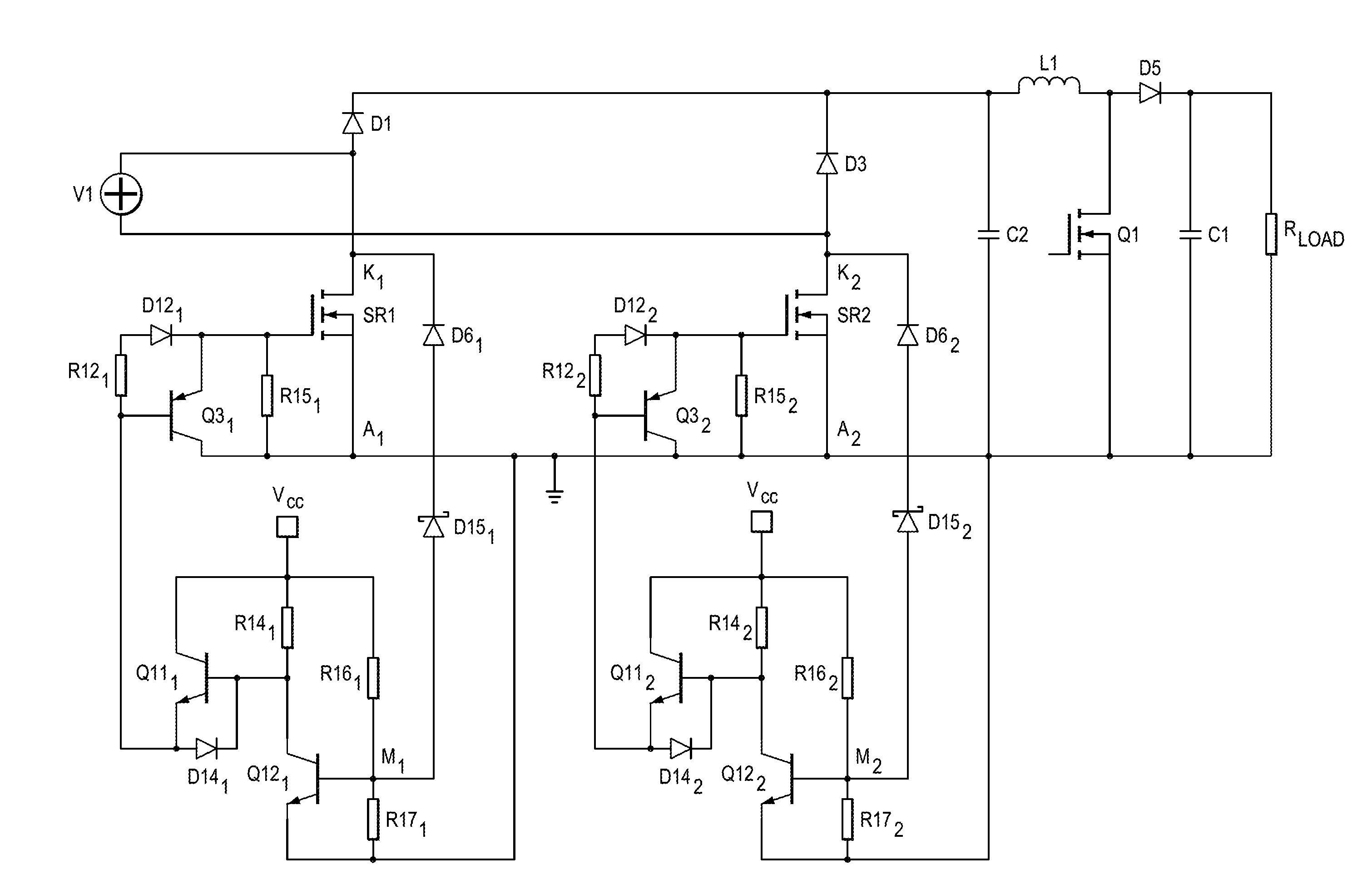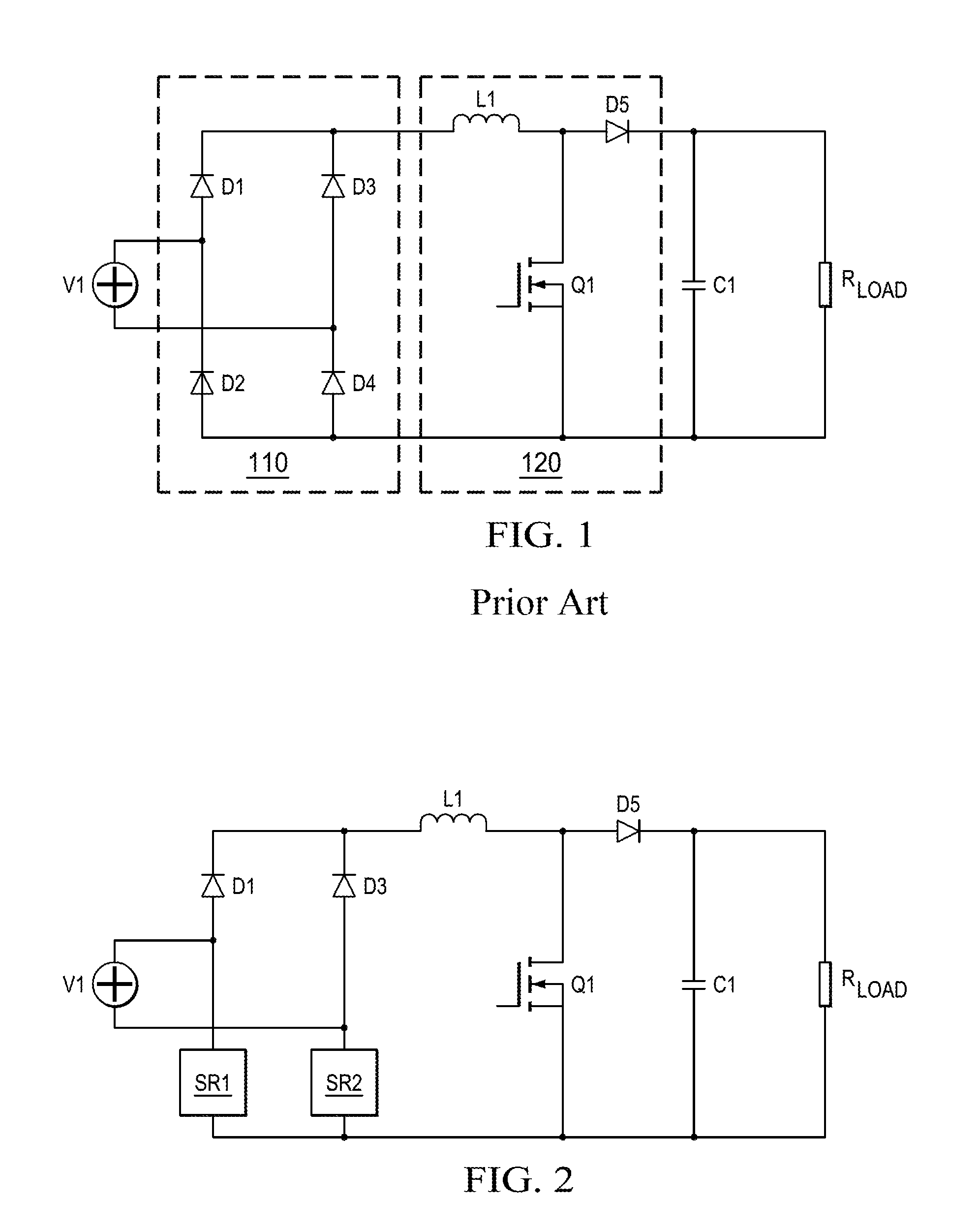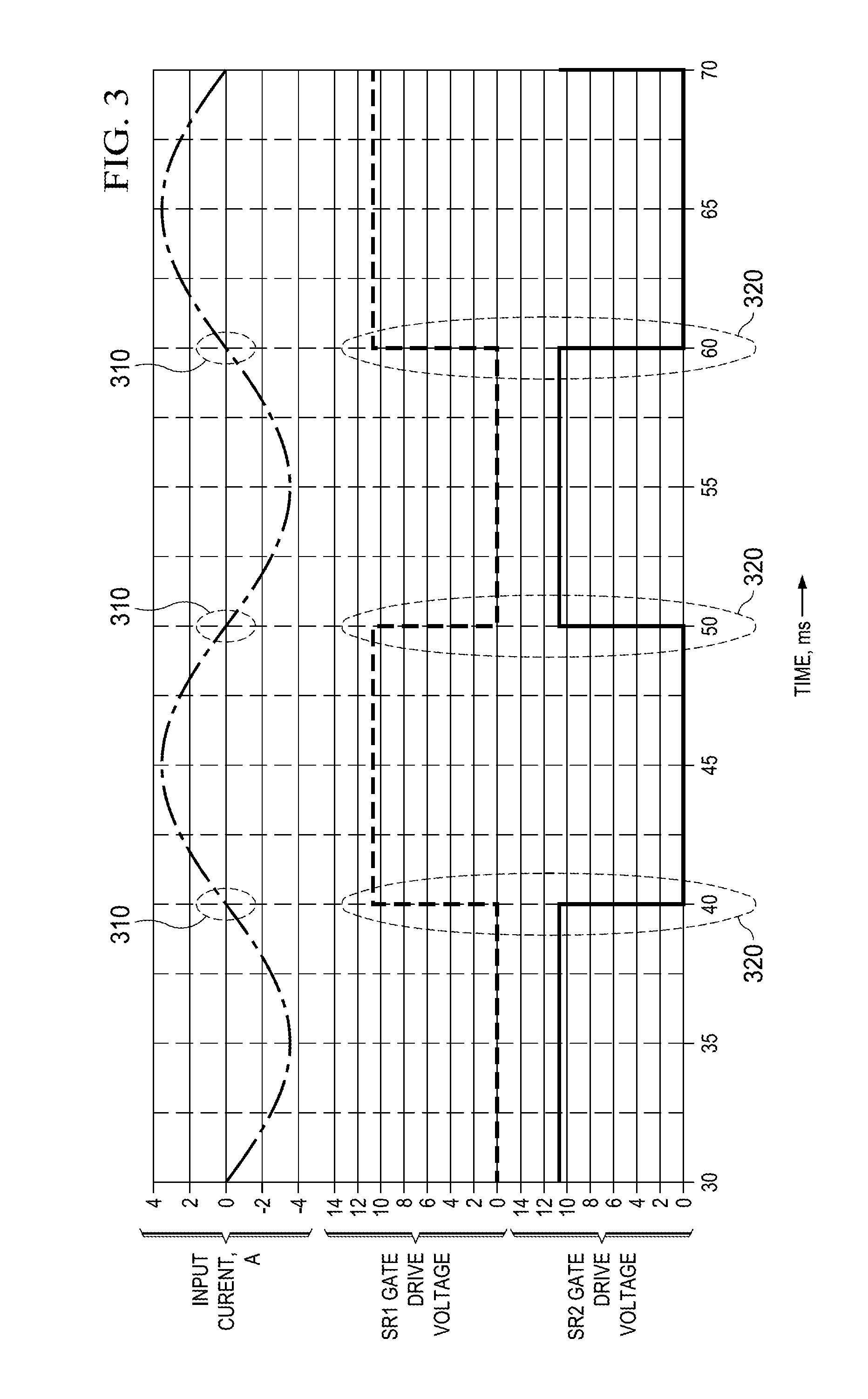Controller for a synchronous rectifier switch
a technology of synchronous rectifier switch and controller, which is applied in the field of power electronics, can solve the problems of limiting the conversion efficiency of the power converter, introducing a power loss component in the power converter, and sustaining a reverse voltage greater than about 60 volts
- Summary
- Abstract
- Description
- Claims
- Application Information
AI Technical Summary
Benefits of technology
Problems solved by technology
Method used
Image
Examples
Embodiment Construction
[0024]The making and using of the present exemplary embodiments are discussed in detail below. It should be appreciated, however, that the present invention provides many applicable inventive concepts that can be embodied in a wide variety of specific contexts. The specific embodiments discussed are merely illustrative of specific ways to make and use the invention, and do not limit the scope of the invention.
[0025]The present invention will be described with respect to exemplary embodiments in a specific context, namely, a controller for a switch such as a synchronous rectifier switch with a delay turn on thereof, and a method of operating the same. While the principles of the present invention will be described in the environment of a power converter, any application that may benefit from a controller such as a power amplifier or a motor controller is well within the broad scope of the present invention. Additionally, while the principles of the present invention will be described...
PUM
 Login to View More
Login to View More Abstract
Description
Claims
Application Information
 Login to View More
Login to View More - R&D
- Intellectual Property
- Life Sciences
- Materials
- Tech Scout
- Unparalleled Data Quality
- Higher Quality Content
- 60% Fewer Hallucinations
Browse by: Latest US Patents, China's latest patents, Technical Efficacy Thesaurus, Application Domain, Technology Topic, Popular Technical Reports.
© 2025 PatSnap. All rights reserved.Legal|Privacy policy|Modern Slavery Act Transparency Statement|Sitemap|About US| Contact US: help@patsnap.com



